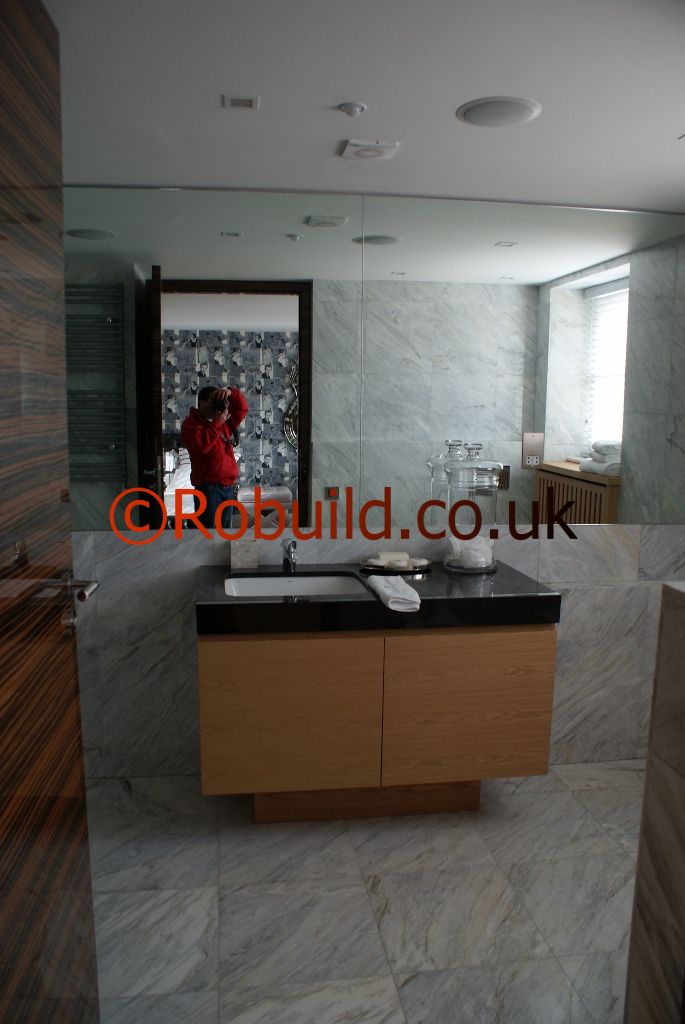The bathroom, or a tiny cloakroom without a window, are perfect arenas for more adventurous experiments with mirrors. Try lining all the walls of the bathroom with them (forget what was said earlier about window walls-the eye will be far too busy staggering about in infinity to worry about that) and mirror the ceiling as well.

As long as there is something worth reflecting, you can transform a dull room into a fascinating kaleidoscope of images. Do not be put off by the bathroom fitments. There is nothing intrinsically ugly about a lavatory or bidet. The shapes, as shapes, are quite pleasing aesthetically, but familiarity has bred contempt. An attractive floor covering of either carpet or tiles, decorative jars or plants and pretty towels will add to the reflection. Or, if you feel that this is overdoing it, a sheet of mirror over the vanity unit will create light and space as well as look good. Fix it hard up against the walls and to the top of the unit, and then try another on the wall behind you.

Mirrors as reflectors of light
Mirrors can be invaluable in helping to lighten and brighten dark corners or even whole rooms. Two mirrors placed opposite each other, butting up to the window wall, for example, will give a room the illusion of greater width and will also make it lighter, by ‘bouncing’ the light further back into it.

This is a very good way of brightening up a long, narrow bedroom, or any dark, confined areas such as a hall. If you panel the sides of a dormer window, in an attic, for instance, with mirror glass, the natural light will be greatly increased by reflection.

Lining the whole deep reveal of a window with mirror glass will have a similar effect.

A little cubby-hole of a room, say a cloakroom, or any dark place with a hopelessly inadequate window, will be transformed if you cover the ceiling with mirror glass and let it reflect light from strip or spot lights.

